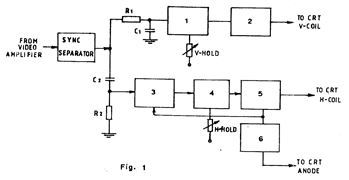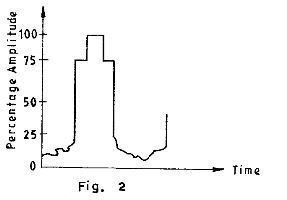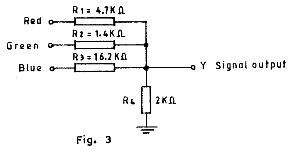Knec Telecommunication Systems October/November 2015 Question Paper
Knec Telecommunication Systems October/November 2015
Course:Craft Certificate In Electrical And Electronic Technology Module Ii
Institution: Knec question papers
Exam Year:2015
TELECOMMUNICATION SYSTEMS
Oct./Nov.2015
Time: 3 hours
THE KENYA NATIONAL EXAMINATION COUNCIL
CRAFT CERTIFICATE IN ELECTRICAL AND ELECTRONIC TECHNOLOGY
(TELECOMMUNICATION OPTION)
MODULE II
TELECOMMUNICATIONS SYSTEMS
3 hours
INSTRUCTIONS TO CANDIDATES
Write your name and index number in the space provided above.
Sign and write the date of examination in the space provided above.
You should have a scientific calculator and a mathematical table for this examination.
This paper consists of THREE section; A, B and C.
Answer any THREE questions from section A, ONE question from section B and ONE question from section C in the spaces provided in this question paper.
ALL questions carry equal marks.
Maximum marks for each part of a question are as shown.
SECTION A: RADIO SYSTEMS
Answer THREE questions from this section.
1. (a) (i) With the aid of a circuit diagram describe the operation of a ring modulator.
(ii) Sketch the modulate output waveform for the circuit in a (i).
(9 marks)
(b) The envelope of a sinusoidally amplitude modulated carrier wave varies between a maximum value of 8 V and a minimum value of 2 V. Determine the:
(i) modulation index;
(ii) carrier voltage amplitude;
(iii) modulating signal voltage amplitude;
(iv) amplitude of the side frequency components.
(11 marks)
2. (a) (i) Define pre–emphasis with respect to frequency modulation (FM) systems.
(ii) Explain “capture effect” as applied to FM receivers
(6 marks)
(b) Draw a labeled block diagram of a stereo FM multiplex transmitter.
(6 marks)
(c) A 6 V, 30 MHz carrier is frequency modulated by a 500 Hz audio sine wave.The maximum deviation is 10 kHz.
(i) Determine the:
(I) Carrier frequency in radians/sec;
(II) Modulating signal frequency in radians/sec;
(III) Modulation index.
(ii) Write the expression for the instantaneous voltage of the modulated wave.
(8 marks)
3. (a) (i) Define image response ratio as applied to radio receivers.
(ii)With the aid of a response curve describe simple automatic gain control (a.g.c)
(6 marks)
(b) With the aid of a circuit diagram, describe the operation of a transistor mixer.
(8 marks)
(c) A superheterodyne radio receiver is turned to 555 kHz and its local oscillator supplies the mixer with a signal at 1010 kHz. The input voltages to receiver at the signal and image frequencies are 1mV and 10μV respectively. Determine the:
(i) Intermediate frequency;
(ii) Image signal frequency;
(iii) Image rejection ratio, in decibels.
(6 marks)
4. (a) (i) Define each of the following with the respect to antennas:
(I) Beamwidth;
(II) Radiation resistance.
(ii)With the aid of a labeled diagram describe selective fading of sky waves.
(10 marks)
(b)The magnetic field strength 10 km from a transmitting antenna is 0.053 A t/m.
Determine the electric field strength 50 km from the antenna in the same direction.
(4 marks)
(c) An antenna has a loss resistance of 8 Ω and efficiency of 90%. The input power to the antenna is 4500 W .Determine the:
(i) Radiation resistance;
(ii) Current fed into the antenna.
(6 marks)
SECTION B: TV FUNDAMENTALS
Answer any ONE question from this section.
5. (a) Define each of the following with respect to TV systems:
(i) Blanking;
(ii) Contrast.
(b) With the aid of a scanning pattern, explain interlaced scanning.
(8 marks)
(c) Figure 1 shows a schematic block diagram of the deflection section of a TV receiver.
(i) Name the blocks labeled 1 to 6;
(ii) State the function of the R1 – C1
(8 marks)

6. (a) (i) State any two merits of negative modulation in TV systems.
(ii)Figure 2 shows the waveform of a video signal for negative modulation.
State the percentage of the carrier signal level for each of the following:
(I) Maximum white;
(II) Blanking;
(III) Tip of sync.
(8 marks)

(b) Table 1 shows faults in a TV receiver and the fault circuit s, Match the faults with the corresponding circuits.
(4 marks)
Table 1
| Faults | Circuits |
| Normal sound but no brightness | IF amplifier |
| Normal picture but no sound | AFC |
| Picture in diagonal bars, out of sync | HV rectifier |
| No picture, sound but normal raster | 4.5 MHz amplifier |
(c) Figure 3 shows a circuit diagram of a matrix for colour addition in a TV receiver.
Determine the value of the luminance signal, γ , in terms of the inputs red, green and blue.
(8 marks)

SECTION C: DATA COMMUNICATION
Answer any ONE question from this section.
7. (a) (i) State any two advantages of digital over analog systems.
(ii)Describe each of the following data multiplexing schemes:
(I) Frequency division multiplexing;
(II) Time division multiplexing.
(6 marks)
(b) Draw a labeled block diagram of a PCM – based public automatic branch exchange (PABX).
(4 marks)
(c) Describe integrated services digital network (ISDN).
(4 marks)
(d) Draw a labeled layout illustrating the wiring scheme to connect six offices to a hub using unshielded twisted pair (UTP) cables.
(4 marks)
8. (a) (i) State any two applications of coaxial cables in telecommunication systems.
(ii)Draw a labeled diagram illustrating a broadcast link via satellite microwave.
(6 marks)
(b) Describe circuit switching as used in wide area networks.
(4 marks)
(c) (i) Describe the effect of line attenuation on the transmitted data waveform.
(ii)A 1200 bits/sec data signal is to be transmitted over a 1 km line. The bandwidth of the signal transmitted is only limited to the fundamental frequency. The phase change coefficient, β, at this frequency is 0.056 rad /km. Determine the:
(I) Fundamental frequency;
(II) Velocity;
(III) Time delay.
(10 marks)
More Question Papers
Exams With Marking Schemes
Popular Exams
Mid Term Exams
End Term 1 Exams
End Term 3 Exams
Opener Exams
Full Set Exams
Return to Question Papers